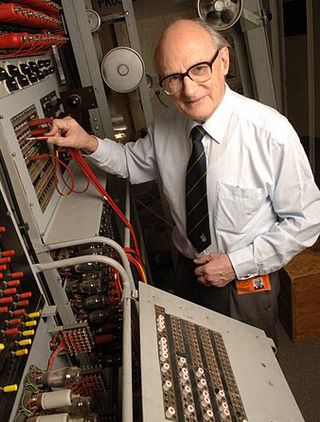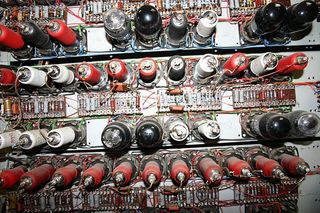Q&A: Tony Sale, the man who rebuilt Colossus
Colossus was key in breaking German code during WWII. We spoke to the man who rebuilt the mammoth machine and took a look around the Museum of Computing at Bletchley Park.
Bletchely Park is widely recognised as the home of computing as we know it today. Back during World War II (WWII), dedicated British code breaks worked there tirelessly to break German code and help eventually win the war.
At the heart of such deciphering efforts in reading encrypted codes - encrypted by the German Lorenz SZ40/42 machine - were the Colossus machines. These mammoth computers were the first programmable ones of their kind. Complex calculations were carried out almost effortlessly by the vacuum tubes used.
We have engineer Tommy Flowers and his team including Allen Coombs, Sid Broadhurst and Bill Chandler to thank for the birth of Colossus.

How long have you spent working on this mammoth rebuild project?
It's taken about 15 years for us to rebuild. It was built from eight black and white photos and some fragmented circuit designs. It's been reverse engineering, squared. And bloody difficult! But it's been very successful.

How does it work? Wasn't it ground-breaking in its day?
I've got a Pentium 2 computer and on that it's running a virtual Colossus and on that it takes the same amount of time to break a cipher as that machine did and does now.
Get the ITPro. daily newsletter
Receive our latest news, industry updates, featured resources and more. Sign up today to receive our FREE report on AI cyber crime & security - newly updated for 2024.
It was very successful in breaking the German's Lorenz cipher. It can take up to six hours to find all the settings, but that was a remarkable achievement.
Maggie has been a journalist since 1999, starting her career as an editorial assistant on then-weekly magazine Computing, before working her way up to senior reporter level. In 2006, just weeks before ITPro was launched, Maggie joined Dennis Publishing as a reporter. Having worked her way up to editor of ITPro, she was appointed group editor of CloudPro and ITPro in April 2012. She became the editorial director and took responsibility for ChannelPro, in 2016.
Her areas of particular interest, aside from cloud, include management and C-level issues, the business value of technology, green and environmental issues and careers to name but a few.





